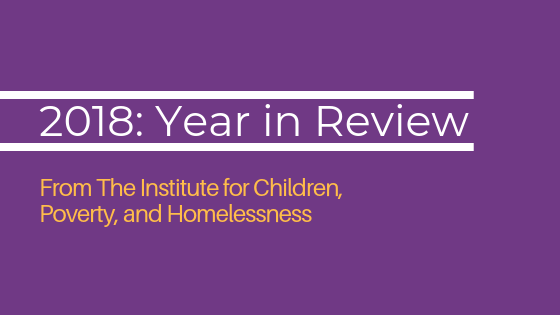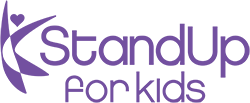
The Institute for Children, Poverty, and Homelessness (ICPH) recently released their 2018: Year in Review, summing up their topics and findings over the last year. Their focus on bringing data into visual and interactive forms has helped everyone learn more about education, health & well-being, housing & shelter, and community-specific issues faced by homeless children and families.
Education
The ICPH The United States of Homelessness interactive map allows anyone to see how the homeless problem is impacting their state and local communities. By combining state- and school district-level data on student homelessness across all 50 states, they’ve created a way to visually digest the number and impact of homeless students across the United States.

They also covered numerous school topics including diving into housing and school stability in their Bridging the Graduation Gap research. Looking at New York City high school data, they found that while 74% of high school students who were never homeless eventually graduated from college on time, it dropped to 63% for students who had at some point stayed in temporary housing, and down to 45% for those who identified as having stayed in a shelter.
Health & Wellbeing
A lot of what StandUp For Kids focuses on is the health and wellbeing of our kids, and the ICPH also documented numerous increased risk factors that we all know too well. The increased rates of attempted suicide, missing school and work due to feeling unsafe, high risk for sexual violence, and increases in asthma among homeless youth were all reported on.
Housing & Shelter
One of the ICPH’s most interesting articles of 2018 was in finding the discrepancy of how we count and help homeless families and youth in their Are We Really Counting America’s Homeless Families? article. They found that while HUD had counted 1,714 homeless people in San Diego, CA in 2017, the San Diego City School District (only one of a couple dozen school districts in San Diego County) reported 7,082 homeless students. How we’re counting and considering our homeless youth can have huge consequences on the assistance and programs offered to them.
We recommend visiting the Institute for Children, Poverty & Homelessness site for these and other reports and insights into the homelessness problem, and then visiting the StandUp For Kids site and find out How You Can Help.
